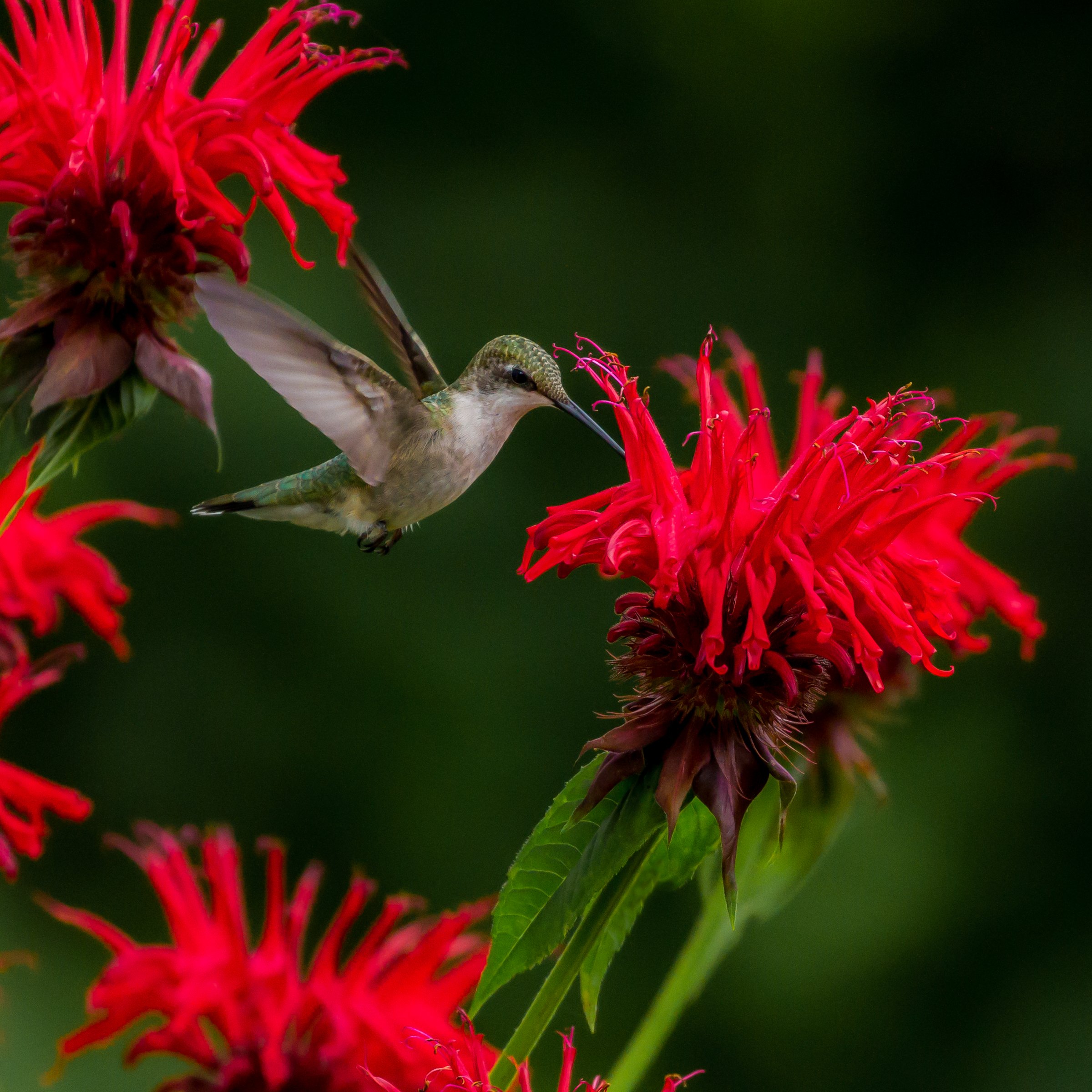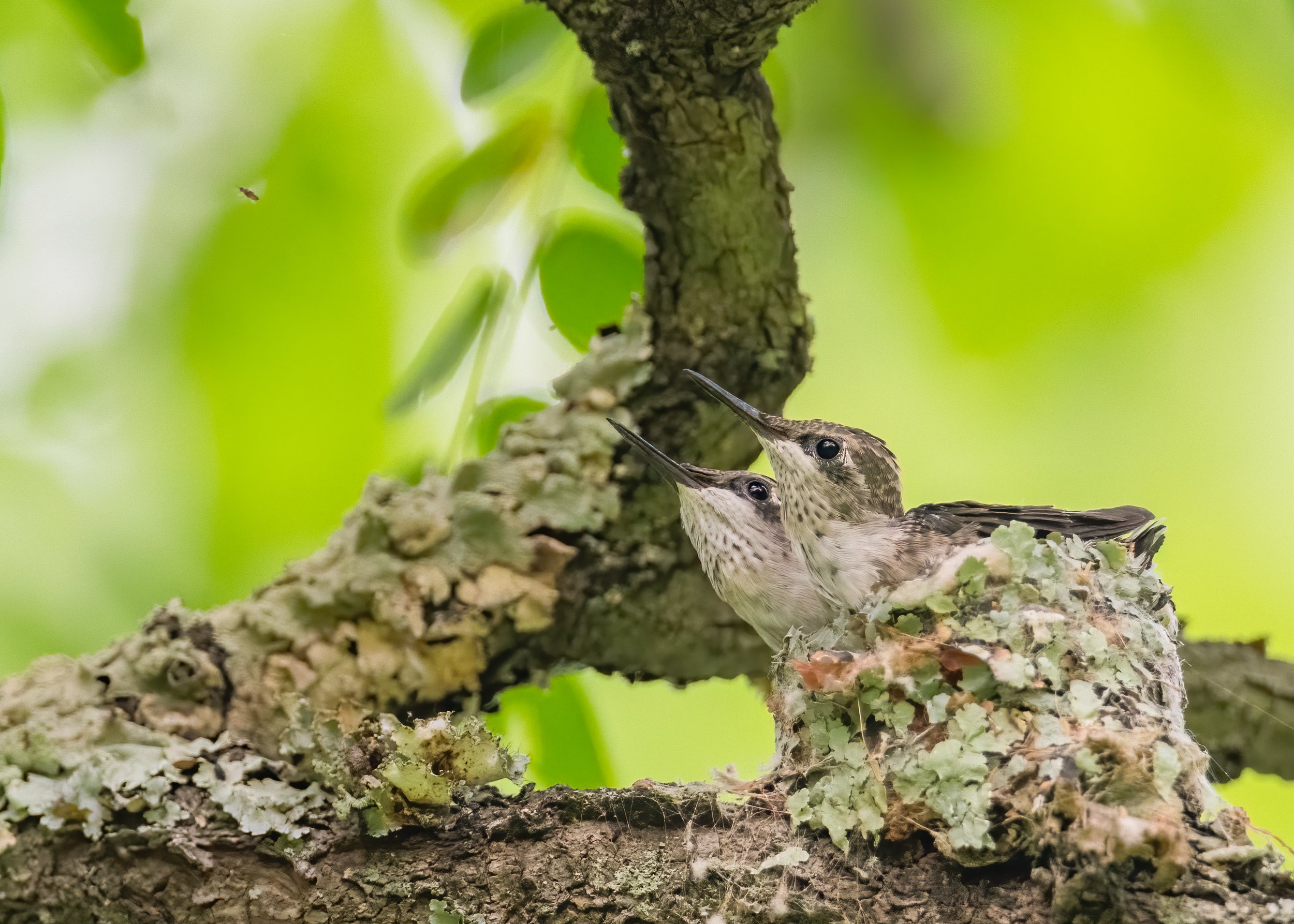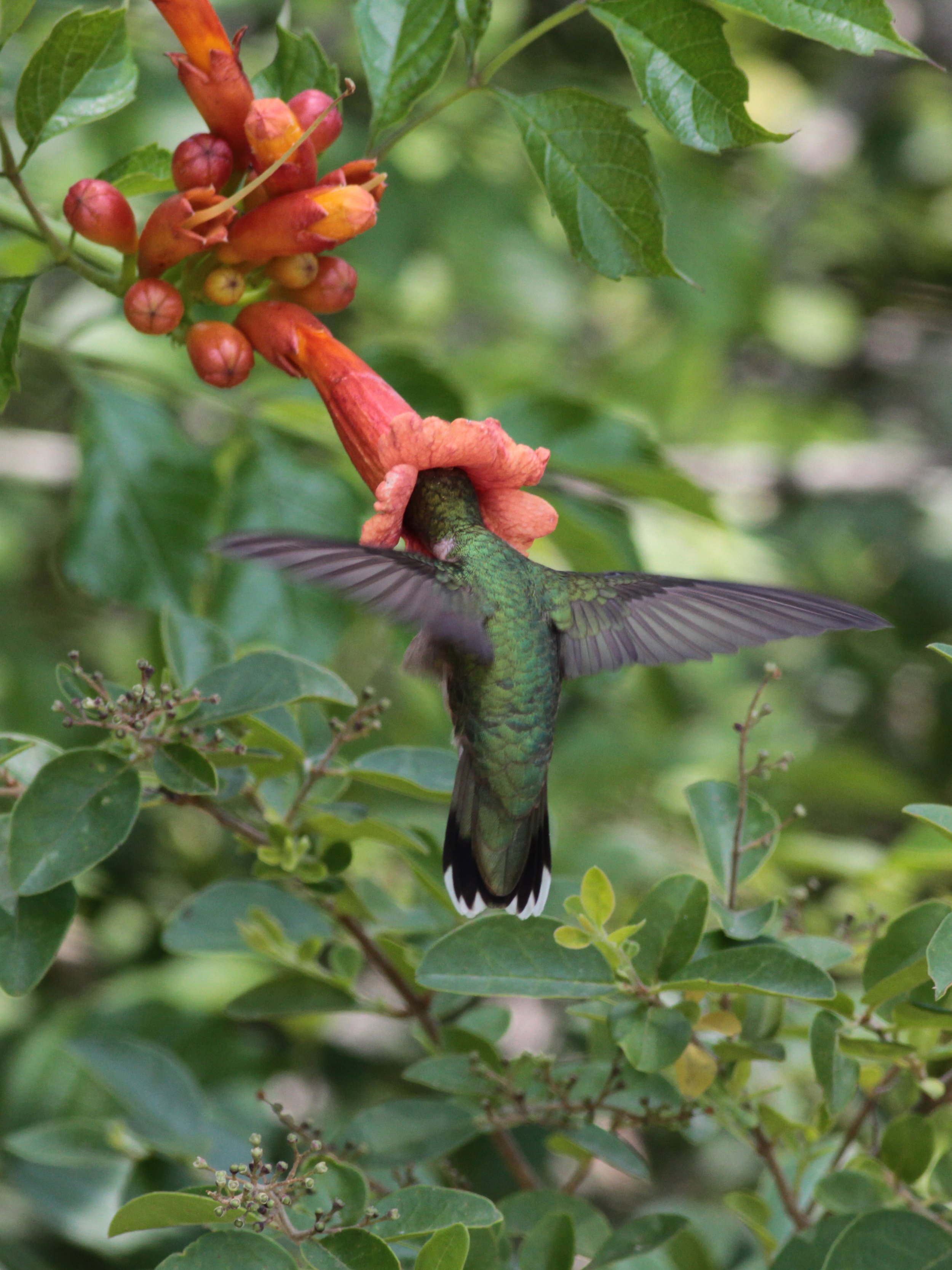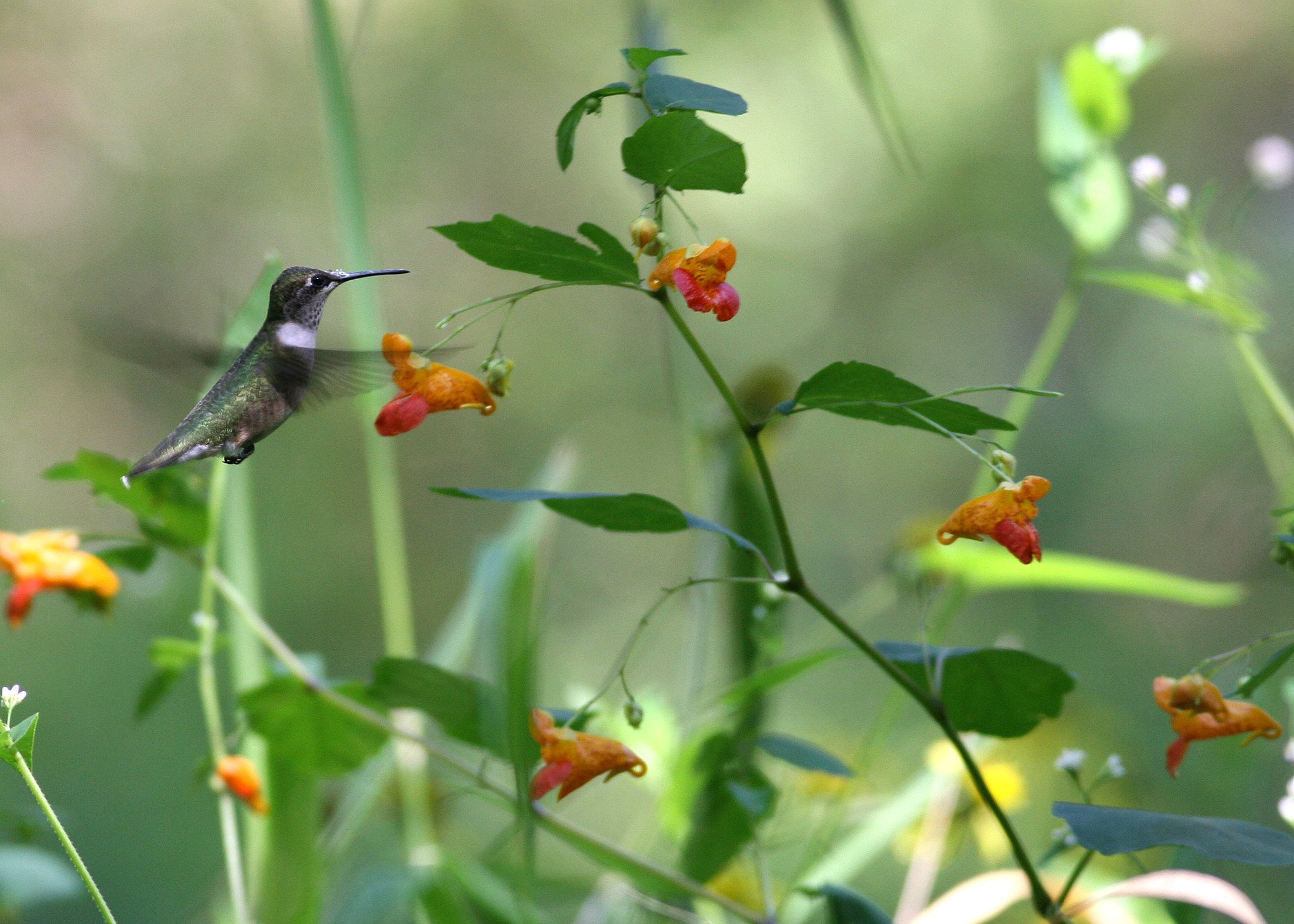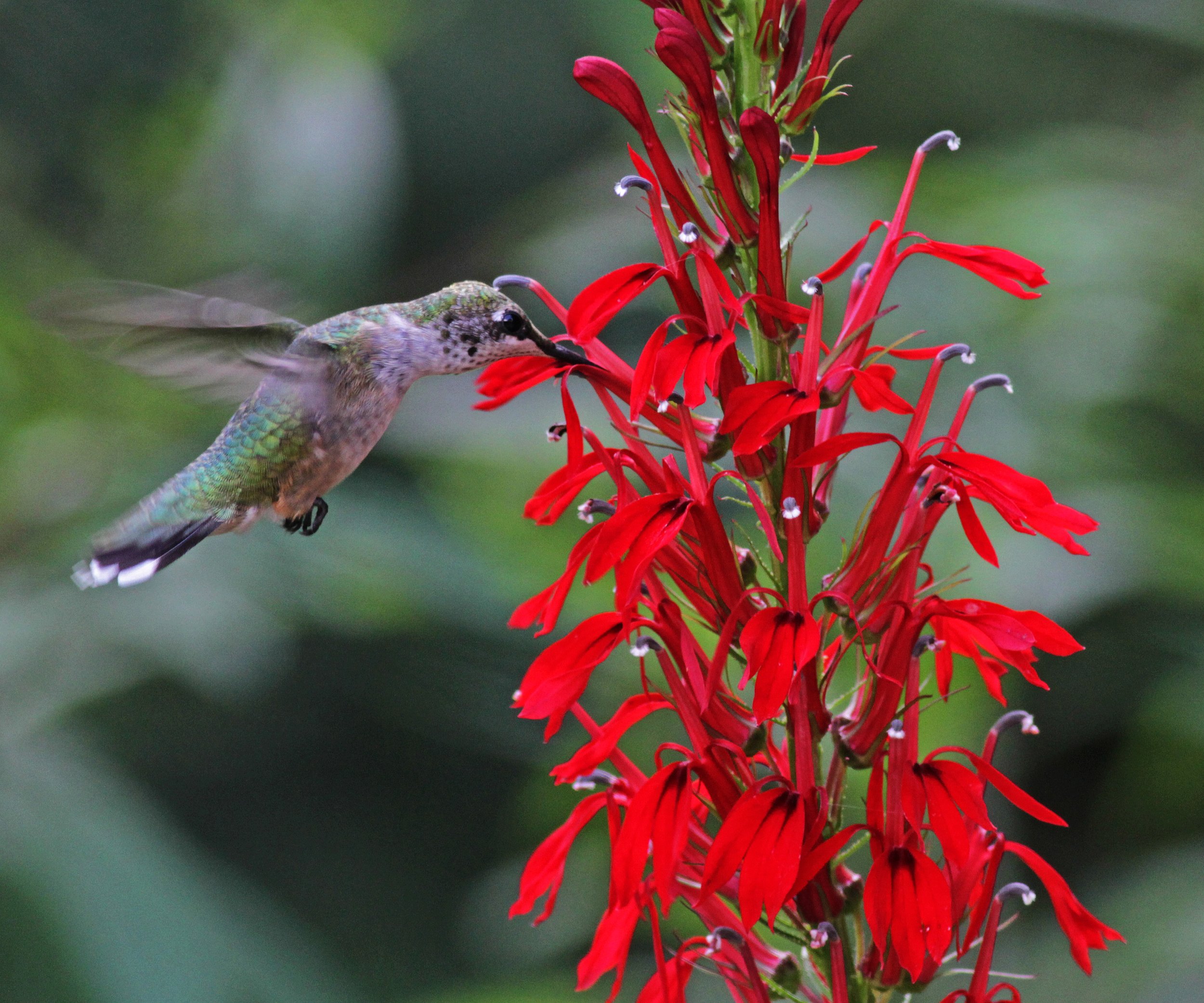Ruby-throated Hummingbird (Archilochus colubris)
Ruby-throated Hummingbird by Tibor Nagy
One of the smallest birds in North America, the Ruby-throated Hummingbird is the only hummingbird species that breeds in eastern North America. During fall migration, this tiny bird may fly up to 500 miles nonstop across the Gulf of Mexico to reach its wintering grounds in the western Gulf coast and central America—then back again in the spring. Hummingbirds feed mostly on nectar, and can be helped by planting nectar-providing native plants, and by protecting them from cats and from collisions with window glass.
To learn more about ID, range, breeding, and voice, visit Cornell’s All About Birds
| What Ruby-throated Hummingbirds Need | How Can We Help |
|---|---|
| Food and Water: Hummingbirds prefer nectar from red tubular flowers, with which they are thought to have co-evolved. Favored plants include jewelweed, columbine, trumpet creeper, wild bergamot, scarlet bee-balm, coral honeysuckle, cardinal flower, catchfly, and fire-pink. Hummingbirds are the pollinators for many of these plants. They use sap wells excavated by Yellow-bellied Sapsuckers in birch, tulip poplar, or red maple trees. Hummingbirds also eat small insects picked from the leaves or bark of trees or caught in mid-air. |
|
| Shelter: Hummingbirds sleep and roost on sheltered tree branches. |
|
| Nesting: Hummingbirds breed in mixed woodlands and eastern deciduous forest, including yards, gardens, and orchards. Nests are made of thistle or dandelion down woven together with spider webs and decorated on the outside with bits of lichen. They are usually built on the upper side of a branch, 15 to 20 feet up in trees, near the end of hanging branches sheltered from above by leaves. |
|
| Other Threats: These tiny birds are susceptible to predation by house cats, and to collisions with plate glass windows.
Praying mantis have been known to snare hummingbirds.
|
|
Check out Ruby-throated Hummingbird presence near you:
Find sightings using eBird Data: Narrow the view by entering your county in the “DATA FOR:” filter



